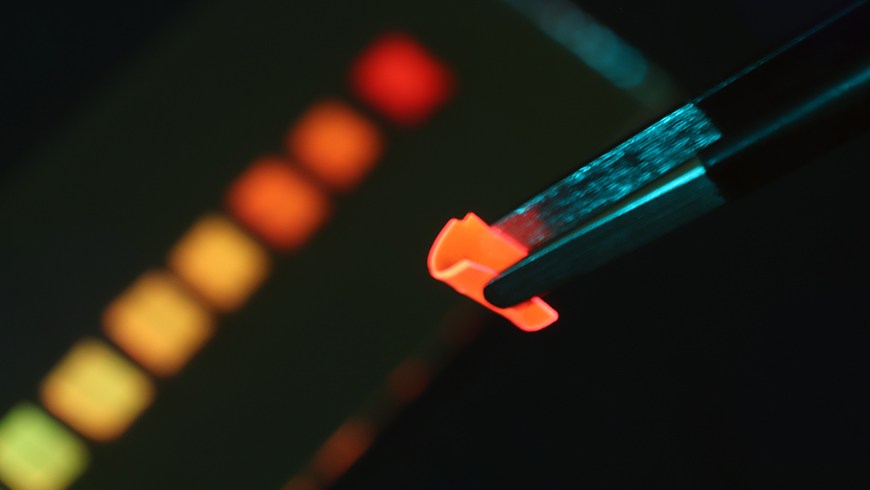Wearable solar concentrators
Turning streetwear into solar concentrators
Researchers at Empa and ETH Zurich succeeded in developing a material that works like a luminescent solar concentrator and can even be applied to textiles. This opens up numerous possibilities for producing energy directly where it is needed, i.e. in the use of everyday electronics.

Our hunger for energy is insatiable, it even continues to rise with the increasing supply of new electronic gadgets. What's more, we are almost always on the move and thus permanently dependent on a power supply to recharge our smartphones, tablets and laptops. In the future, power sockets (at least for this purpose) could possibly become obsolete. The electricity would then come from our own clothes. By means of a new polymer that is applied on textile fibers, jackets, T-shirts and the like could soon function as solar collectors and thus as a mobile energy supply.
Making luminescent materials flexible
Materials capable of using indirect or ambient light for energy generation are already being used in the solar industry. These materials contain special luminescent materials and are called "Luminescent Solar Concentrators", or LSC for short. The luminescent materials in the LSC capture diffuse ambient light and transmit its energy to the actual solar cell, which then converts light into electrical energy. However, LSCs are currently only available as rigid components and are unsuitable for use in textiles because they are neither flexible nor permeable to air and water vapor. An interdisciplinary research team led by Luciano Boesel from the Laboratory for Biomimetic Membranes and Textiles has now succeeded in incorporating several of these luminescent materials into a polymer that provides precisely this flexibility and air permeability.
Well-known polymer with sophisticated properties
This new material is based on Amphiphilic Polymer Co-Networks, or APCN for short, a polymer that has long been known in research and is already available on the market in the form of silicone-hydrogel contact lenses. The special properties of the polymer – permeability to air and water vapor as well as flexibility and stability – are also beneficial to the human eye and are based on special chemical properties. "The reason we chose exactly this polymer is the fact that we are capable of incorporating two immiscible luminescent materials at the nano scale and let them interact with each other. There are, of course, other polymers, in which these materials could be integrated; but this would lead to aggregation, and the production of energy would thus not be possible», explains Boesel.
Bright solar concentrators for clothing
In collaboration with colleagues from two other Empa labs, Thin Films and Photovoltaics and Advanced Fibers, Boesel's team added two different luminescent materials to the gel tissue, turning it into a flexible solar concentrator. Just as on large-scale (rigid) collectors, the luminescent materials capture a much wider spectrum of light than is possible with conventional photovoltaics. The novel solar concentrators can be applied to textile fibers without the textile becoming brittle and susceptible to cracking or accumulating water vapor in the form of sweat. Solar concentrators worn on the body offer an immense benefit for the ever-increasing demand for energy, especially for portable devices.
| Audio |

Empa researcher Luciano Boesel talks about flexible solar concentrators for clothing. Radio program on ToxicFM on October 22, 2020 (in German)





